Worksheet: Skeletal & Muscular System - 2 | Science Class 5 PDF Download
Q1: Fill in the Blanks.
(i) The skeletal system is made up of _______ bones.
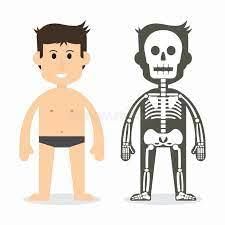
(ii) The smallest bones in the human body are found in the _______.
(iii) The place where two or more bones meet is called a _______.
(iv) The strong, flexible tissue that covers the ends of bones at a joint is called _______.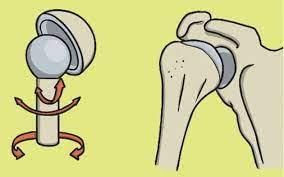
(v) The muscles that we can control voluntarily are known as _______ muscles.
Q2: Match the Column.
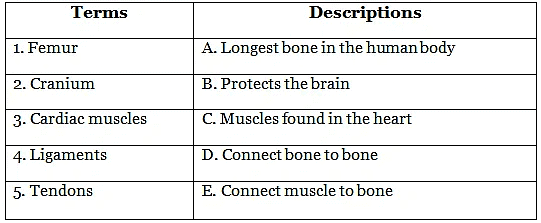
Q3: Multiple Choice Questions (MCQ).
(i) Which of the following is not a function of the skeletal system?
(a) Providing support and shape to the body
(b) Protecting vital organs
(c) Producing red blood cells
(d) Transmitting nerve impulses
(ii) Which type of muscles tire quickly and are found in the arms and legs?
(a) Cardiac muscles
(b) Smooth muscles
(c) Skeletal muscles
(d) Involuntary muscles
(iii) How many vertebrae are there in the human spine?
(a) 12
(b) 24
(c) 33
(d) 26
(iv) Which bone protects the heart and lungs?
(a) Femur
(b) Ribcage
(c) Humerus
(d) Skull
(v) What is the main function of red blood cells?
(a) Fighting infections
(b) Transporting oxygen
(c) Carrying nutrients
(d) Regulating body temperature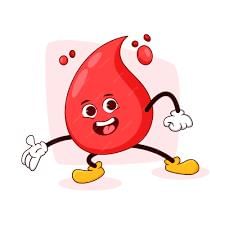
Q4: True or False.
(i) The skull is a single bone that protects the brain.
(ii) Cartilage is more rigid and less flexible than bones.
(iii) Muscles can only pull and cannot push.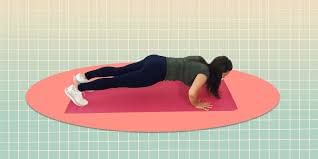
(iv) Ligaments are fibrous tissues that connect muscles to bones.
(v) The muscular system helps in maintaining body posture.
Q5: Short Answer Questions.
(i) What are the three types of muscles in the human body, and give an example of each?
(ii) How do muscles work in pairs during movement?
(iii) What is the role of the ribcage in protecting vital organs?
(iv) Why is calcium important for the skeletal system?
(v) How does regular exercise benefit the muscular system?
The solutions of the worksheet "Skeletal & Muscular System - 2"
|
43 videos|371 docs|45 tests
|
FAQs on Worksheet: Skeletal & Muscular System - 2 - Science Class 5
| 1. What are the functions of the skeletal system? |  |
| 2. How many bones are there in the human body? |  |
| 3. What is the role of muscles in the body? |  |
| 4. How are muscles attached to bones? |  |
| 5. What is the difference between voluntary and involuntary muscles? |  |

















